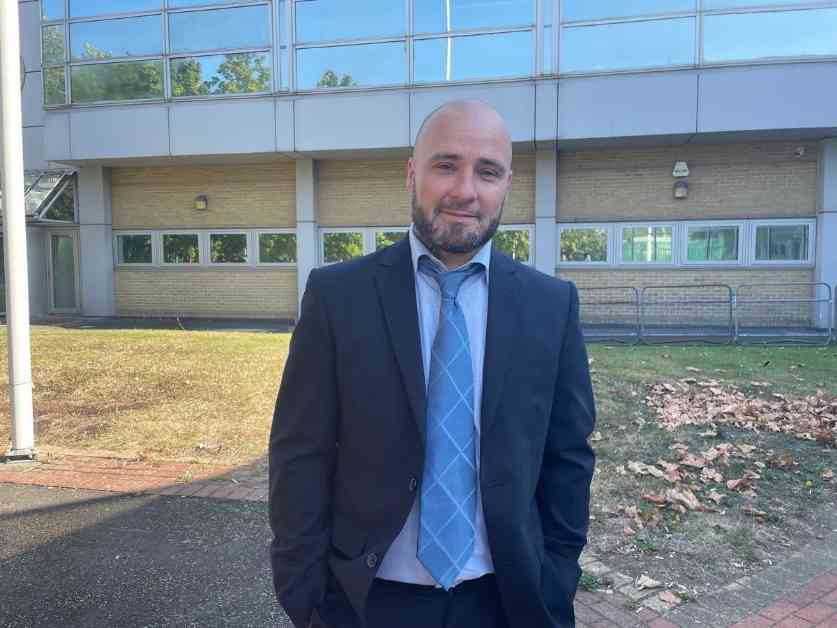Man Admits to Encouraging Vandalism of Ulez Cameras
Joseph Nicholls, a 43-year-old electrician and father of three from south London, recently made headlines after pleading guilty to charges related to promoting the vandalism of Ulez cameras. The incident took place in Foots Cray High Street, Sidcup, where Nicholls admitted to publishing a Facebook post encouraging others to damage the cameras used for Mayor Sadiq Khan’s clean air scheme. In addition to the Facebook post, he also confessed to sending a threatening email to Yunex Traffic, a contractor employed by Transport for London (TfL) to manage the system.
Nicholls appeared in Woolwich Crown Court on Tuesday afternoon to acknowledge his actions. The judge, Mr Recorder Steven Kovats KC, adjourned the case for pre-sentence reports, keeping all sentencing options open. While Nicholls’ barrister, Claire Cooper, requested a non-custodial sentence, emphasizing the importance of understanding his reasoning behind the offenses.
The incident unfolded as a response to the expansion of the Ulez zone, which led to an increase in the installation of new cameras. These cameras, valued at £6,000 each, were primarily targeted in outer London areas that were newly included in the Ulez system. Despite the vandalism, TfL has not disclosed the total cost of repairing or replacing the damaged cameras. With over 3,700 Ulez cameras spread across London, the system plays a crucial role in monitoring vehicles entering the zone and enforcing compliance with the clean air regulations.
Discovery of Ulez Camera Parts at Nicholls’ Home
During a search of Nicholls’ residence, police uncovered several component parts of Ulez cameras, raising concerns about the extent of his involvement in the vandalism. While it remains unclear how many cameras were affected by his actions, the presence of these parts at his home suggests a deliberate effort to disrupt the Ulez scheme. This discovery added weight to the charges brought against Nicholls, highlighting the potential risks associated with damaging essential infrastructure designed to maintain air quality standards in the city.
Prosecutor Ed Butler informed the court about Nicholls’ previous court caution for harassment in 2015, indicating a pattern of behavior that escalated to more serious offenses. The charges against him included intentionally encouraging or assisting in criminal activities through social media posts and sending threatening communications to disrupt the Ulez system. These actions not only posed a threat to public safety but also undermined the effectiveness of the clean air initiative supported by Mayor Khan and TfL.
Impact of Camera Vandalism on the Ulez Scheme
The vandalism of Ulez cameras has far-reaching consequences beyond the immediate financial costs of repairing or replacing the damaged equipment. It jeopardizes the safety of motorists and pedestrians by disrupting the monitoring and enforcement mechanisms essential for regulating vehicle emissions within the Ulez zone. The deliberate destruction of these cameras reflects a broader challenge in ensuring compliance with environmental regulations and promoting sustainable transportation practices in urban areas.
TfL’s response to the incidents of camera vandalism underscores the organization’s commitment to upholding the integrity of the Ulez scheme. By swiftly repairing or replacing the affected cameras, TfL aims to minimize disruptions and maintain the functionality of the system. The extensive camera network deployed across London serves as a critical tool for identifying non-compliant vehicles and enforcing the necessary penalties to deter future violations.
In a statement addressing the issue, TfL emphasized the importance of preventing further damage to Ulez cameras and ensuring the continued operation of the scheme. The organization reiterated its commitment to detecting non-compliant vehicles and encouraged motorists to check their vehicle’s compliance status to avoid penalties. By leveraging technology and enforcement measures, TfL strives to create a cleaner and healthier environment for residents and visitors in London.
Conclusion
The case of Joseph Nicholls highlights the challenges faced in maintaining the effectiveness of environmental initiatives like the Ulez scheme. While his actions may have been driven by personal motives, the consequences of promoting vandalism and disruption of essential infrastructure extend beyond individual grievances. As authorities work to address the aftermath of camera vandalism and enhance security measures, the public’s cooperation in upholding environmental regulations remains critical to achieving sustainable urban development and improving air quality standards in London.












